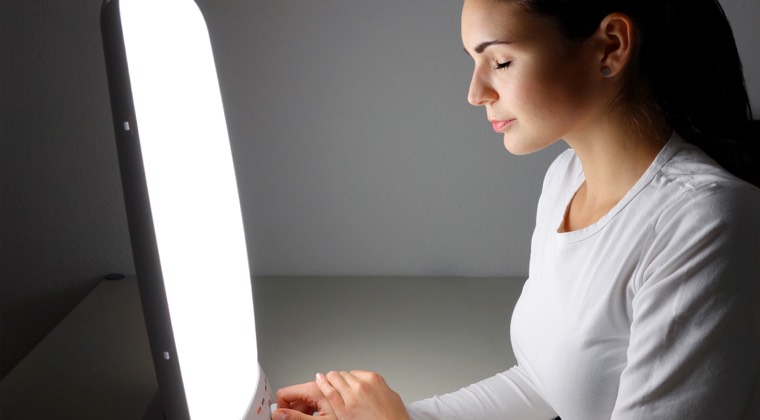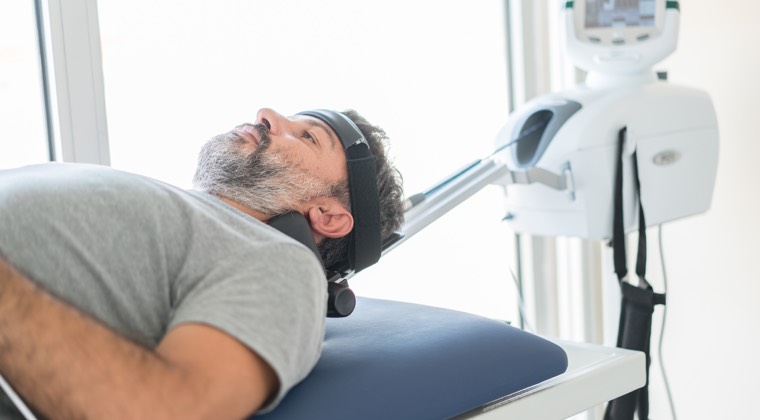Biofeedback
What is Biofeedback?
Biofeedback is a broad term describing the use of various devices that allow patients to receive information about how their body is responding to pain and stress. This feedback allows patients to practice effective ways for managing their body’s physical response. In the treatment of pain, biofeedback is often used to help promote physical relaxation. By being able to observe how the body responds, patients can learn and train themselves to relax more effectively. Biofeedback is often used in combination with specific skills such as diaphragmatic breathing, meditation, or other forms of relaxation. Biofeedback allows patients to receive direct feedback about whether what they are doing is having the intended effect. Biofeedback can also help patients be more aware of the connection between thinking patterns and how the body responds with stress or pain.
How does Biofeedback work?
Biofeedback typically involves being connected to a computer or some wearable device. These devices are used to measure one or more biological responses including breathing, heart rate, muscle tension, skin conductance (e.g. sweating), temperature, or brain wave activity. Changes in these physical responses have been shown to be related to pain, tension, and stress. A biofeedback device is used to monitor a patient’s physical response as they engage in new pain management skills and helps them to refine the use of their new skills. Biofeedback includes active participation by the patient, including both with and without a biofeedback device. The device allows patients to see in real time the effect of changes that they are making, but skills continue to require practice. Biofeedback is intended to be a short-term learning tool to help patients learn how to control different physiological processes in their bodies. Longer-term, patients are encouraged to practice these skills even when not using the device. One primary target for biofeedback is sympathetic nervous system arousal (fight or flight) which is active when in pain and can be effectively managed with practice, allowing patients to increase the ability to self-regulate their bodies response to painful experiences.
What other names might this go by?
As technology increases, multiple providers, devices, and agencies have started to market different forms of biofeedback. Traditional biofeedback is likely to be provided by a licensed medical professional and patients are encouraged to check a provider’s credentials before enrolling in treatment. Biofeedback may be performed as a component of another treatment such as interdisciplinary care, physical therapy or psychology.
There are now wearable devices, applications, and self-directed biofeedback devices on the market. While some of these treatments are effective, the FDA and State law does not regulate biofeedback devices or providers so interested patients need to ask questions about the level of professionalism associated with services being offered.
Neurofeedback is a specific type of biofeedback focused on brain wave activity. There are now businesses which provide neurofeedback services. Patients are encouraged to discuss treatment options and effectiveness with their current providers before engaging in this form of treatment.
Who can provide Biofeedback services?
Biofeedback services can be performed by several different types of providers. At the current time there are no State laws that regulate the training of those providing biofeedback services. However, biofeedback is often performed by individuals holding other licensure such as Physical Therapists, Psychologists, Social Workers, etc. The Biofeedback Certification Institute of America (BCIA) also provides certification for providers trained in the use of biofeedback.
Wearable technology and applications are now utilizing some aspects of biofeedback. Patients may be able to use this technology to receive some of the benefits of biofeedback on their own as self-management.
What to expect
Biofeedback treatment can be provided in many ways. It often compliments another form of medical care such as psychology. Biofeedback-focused treatment may be performed briefly or for multiple sessions. When receiving biofeedback, a clinician will start by describing the procedure and the intended goals.
A device will then be connected to the patient in one or more ways. Common forms include attaching sensors to the finger tips, affixing sensors to problem muscle groups, use of respiration bands, or attaching temperature sensors. Biofeedback is a measurement tool and there should not be any discomfort associated with receiving biofeedback. In some cases (e.g. pelvic floor dysfunction) internally applied biofeedback devices may be appropriate. Biofeedback devices passively receive and monitor electrical signals coming from the body. Biofeedback does not put electrical signals back into the body.
Once connected, a patient will likely be provided with visual/auditory feedback on their performance. This feedback may be provided in many ways, most commonly though a computer screen which may include graphs, pictures, or even games. The provider will help the patient to identify specific targeted outcomes, which are often focused on increasing the relaxation response in the case of chronic pain treatment. Providers are likely to provide instruction on engaging in a specific skill (e.g. diaphragmatic breathing, progressive muscle relaxation), and then using the feedback provided to help the patient engage and refine each helpful skill.
Depending on the presenting issue and the patient’s response, the number and frequency of biofeedback sessions may vary. Patients will need to practice skills outside of treatment, often without the use of biofeedback devices. The ultimate goal of biofeedback is to assist in the develop of self-management skills that can eventually be used by the patient without the biofeedback device.
Potential Risks
Biofeedback is generally considered safe, with minimal risk. Certain forms of biofeedback devices may not work effectively on individuals with certain medical conditions. Patients are encouraged to discuss use of biofeedback with their provider before engaging in treatment.
Resources Applied Psychophysiology and Biofeedback website: https://www.aapb.org/i4a/pages/index.cfm?pageid=3463
Biofeedback Certification International Alliance – Find a Practitioner: https://certify.bcia.org/4dcgi/resctr/search.html
Psychology Today: https://www.psychologytoday.com/us/therapists/biofeedback


